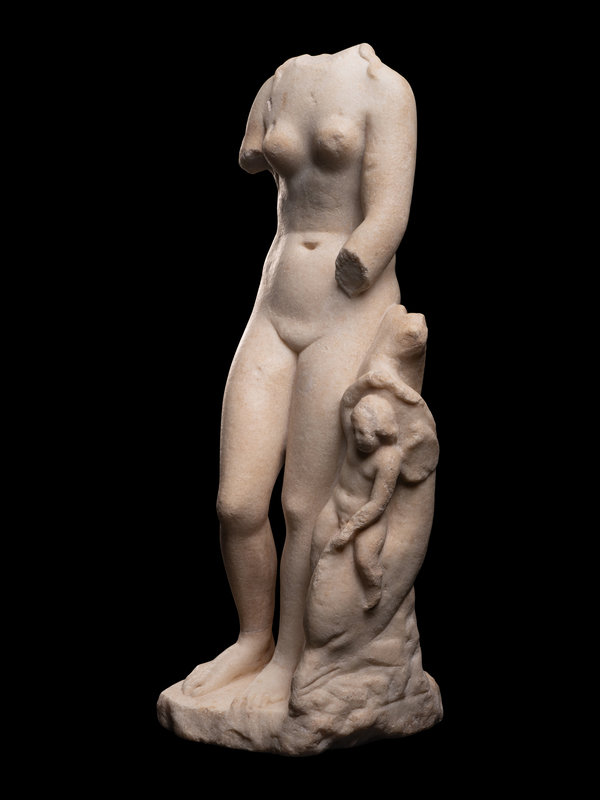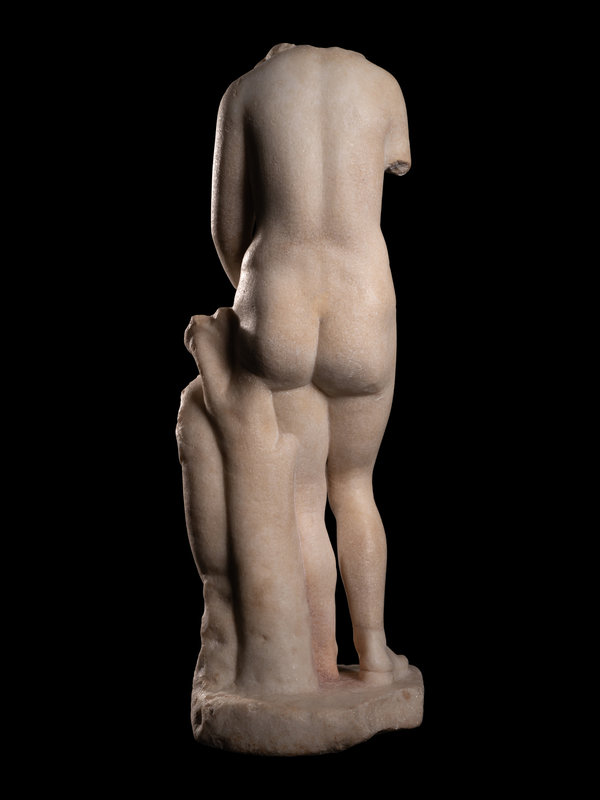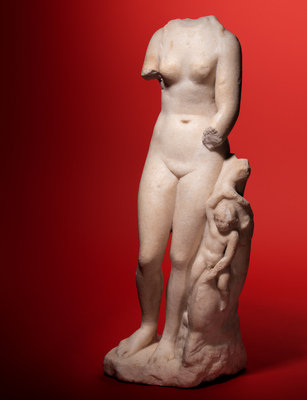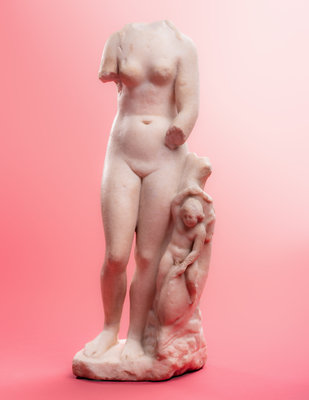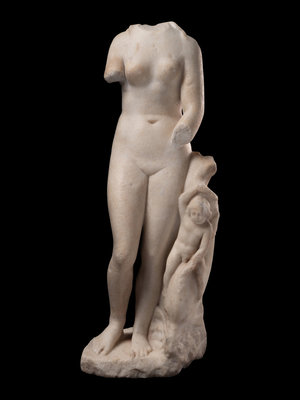Lot 173
A Roman Marble Venus
Sale 1035 - Antiquities and Ancient Art: A Study
May 26, 2022
10:00AM CT
Live / Chicago
Own a similar item?
Estimate
$200,000 -
300,000
Lot Description
A Roman Marble Venus
Circa 1st-2nd Century A.D.
Height 26 1/2 inches (67.31 cm).
Provenance:
Private Collection, France.
Hôtel Drouot, Paris, Maître Albinet - André la Veel, 4-5 May 1965, Lot. 97.
Pierre (1907-2002 ) and Denise Lévy Collection, Troyes, France.
Christie's, London, Antiquities, 14 April 2011, Lot 276.
Note:
During the 4th Century B.C., the ancient Greek sculptor Praxiteles created a legendary statue of the goddess of love in modest pose known today as the Aphrodite of Knidos (or Cnidus). It was one of the first life-sized representations of the nude female form in Greek history. Prior to its creation, Greek sculpture had been dominated by nude figures of heroic men. Even in antiquity, the sculpture was considered a masterpiece. According to the Roman historian, Pliny the Elder, “There are some works of Praxiteles in the Ceramicus at Athens; but, superior to all the statues, not only of his, but of any other artist that ever existed, is the Cnidian Venus” (Pliny, Natural History 36, 20). To the Greeks, she was Aphrodite; to the Romans, she was Venus. To all, she is the goddess of Love, whose iconic image remains compelling to this day.
Private Collection, France.
Hôtel Drouot, Paris, Maître Albinet - André la Veel, 4-5 May 1965, Lot. 97.
Pierre (1907-2002 ) and Denise Lévy Collection, Troyes, France.
Christie's, London, Antiquities, 14 April 2011, Lot 276.
Note:
During the 4th Century B.C., the ancient Greek sculptor Praxiteles created a legendary statue of the goddess of love in modest pose known today as the Aphrodite of Knidos (or Cnidus). It was one of the first life-sized representations of the nude female form in Greek history. Prior to its creation, Greek sculpture had been dominated by nude figures of heroic men. Even in antiquity, the sculpture was considered a masterpiece. According to the Roman historian, Pliny the Elder, “There are some works of Praxiteles in the Ceramicus at Athens; but, superior to all the statues, not only of his, but of any other artist that ever existed, is the Cnidian Venus” (Pliny, Natural History 36, 20). To the Greeks, she was Aphrodite; to the Romans, she was Venus. To all, she is the goddess of Love, whose iconic image remains compelling to this day.
Though the original Greek sculpture is no longer in existence, a myriad of nude Aphrodite were created during the Hellenistic and Roman period, which the wealthy Romans of the Imperial period acquired to decorate their villas and gardens. Among these versions, two principal types repeat her modest pose: the Capitoline Venus and the Medici Venus, which differ from each other in their formal details. This high-quality statue belongs to this series, and even combines traits of one (the hairstyle and the position of the feet of the Capitoline Venus) with the other (the elongated proportions and the presence of the dolphin on the Medici statue).
This statue once belonged to French Industrialist and Modern Art collector, Pierre Lévy (1907-2002). Pierre Lévy was a member of the Conseil artistique de la Réunion des musées nationaux from 1969 until his death in 2002. In 1976, Lévy and his wife Denise, née Liève, donated some two thousand objects including more than three hundred paintings from modern artists such as Matisse, Picasso, Modigliani, Derain, Soutine, and many others that helped create a Museum of Modern Art housed in the former Archbishop's Palace in Troyes, France. Prior to the museum's opening in 1982, the collection was exhibited in 1978 at the Orangerie des Tuileries in Paris. The inclusion of this nude Venus in the Lévy collection is a testament to the statue’s importance and timelessness.
Condition Report
Contact Information
Auction Specialist




